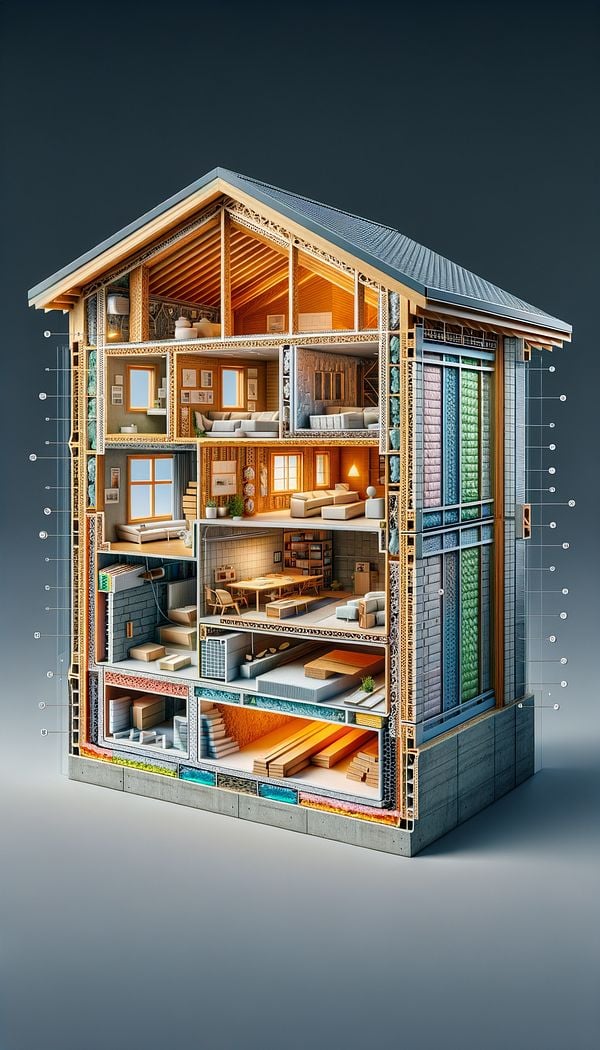What is a Building Envelope?
The physical barrier that separates the interior of a building from the exterior environment.
Description
The building envelope, or building enclosure, plays a crucial role in the function and comfort of a building by separating the indoor environment from the outdoor conditions. It consists of the building's roof, walls, windows, doors, and foundation, essentially encompassing all components that enclose a building's interior space.
This barrier is key in controlling the flow of air, moisture, heat, and sound between the interior and exterior, contributing to a building's thermal performance, resilience against weather, and overall energy efficiency. A well-designed building envelope takes into account factors like climate, building orientation, and local site conditions to optimize for comfort and sustainability.
In interior design, while much focus is given to the aesthetics and functionality of interior spaces, understanding the building envelope is essential for creating environments that are not only visually appealing but also comfortable, energy-efficient, and safe. This includes selecting materials and design strategies that enhance the envelope's efficiency, such as high-performance windows or insulation materials.
Usage
When designing a new home, architects and interior designers work closely to ensure that the building envelope integrates efficiently with the home's layout and design style, enhancing both its aesthetic appeal and energy performance. For existing buildings, retrofitting the envelope with energy-efficient windows or insulation can significantly improve comfort and reduce heating and cooling costs.
FAQs
-
Why is the building envelope important?
The building envelope is important because it plays a crucial role in maintaining the internal climate, energy efficiency, and overall comfort of a building by managing the exchange of heat, air, and moisture between the interior and exterior.
-
What components make up the building envelope?
The building envelope includes the roof, walls, windows, doors, and foundation of a building. Each component works together to enclose the interior space and protect it from external conditions.
-
How can improving the building envelope improve a building's energy efficiency?
Improving the building envelope through measures like adding insulation, using energy-efficient windows, and ensuring proper sealing can reduce the amount of heat loss in winter and heat gain in summer, leading to lesser reliance on heating and cooling systems and, consequently, lower energy bills.
Practical Application
When planning a renovation or new construction, prioritize evaluating and improving the building envelope for better energy performance. This may include selecting materials with better insulation properties, ensuring proper sealing around windows and doors, and considering the orientation of the building for optimal sunlight exposure and wind protection. Paying attention to these details early in the design process can result in significant long-term benefits for comfort, energy savings, and sustainability.
-
Technical Terms38 articles
-
Space Planning & Layout134 articles
-
Materials & Textiles360 articles
-
Construction & Building86 articles
-
Sustainability & Eco-Friendly Design69 articles
-
HierarchyHierarchy in interior design refers to the deliberate organization of elements in a space to signify their importance.
-
StuccoStucco is a type of plaster used as a coating for walls and ceilings.
-
BlanketA large, rectangular piece of soft fabric, often used for warmth while sleeping or resting.
-
SelvageSelvage refers to the tightly woven edge that runs along each side of a piece of fabric.
-
Pull-Up LeatherPull-up leather is a type of leather known for its color-changing quality when stretched or pulled.
